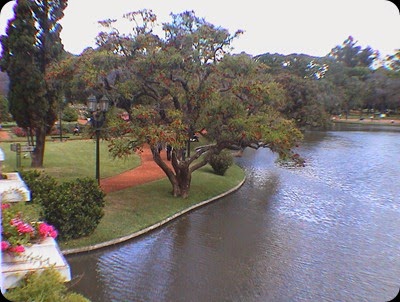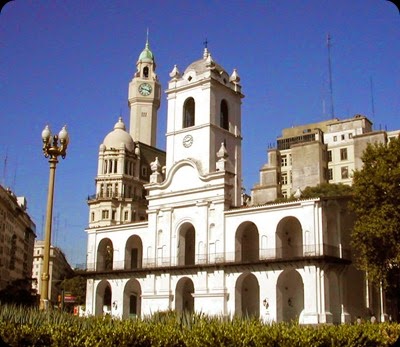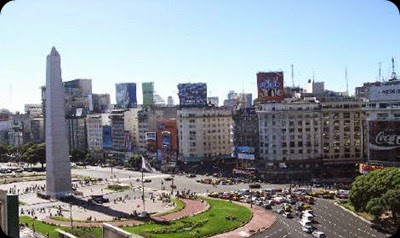Buenos Aires: Vivid colors of an old city.
talian immigrants, the steak is one of the few indigenous art forms. Become a symbol of an era in which he won fame with popular sayings texts now demand and interest in this art travels the world.
He was a stubborn Italian and as such refused to continue painting the cars municipal gray tones such as oppressed him. Vincent Brunetti is that he liked the colors. One day he came to the shop and painted a car with intense hues on both sides stamped him a line and so left the first record of what would be the thread. It was in the late nineteenth century.
While filleting newly acquired art features in the early '70s, its glory stood in the middle of the last century were initially horse-drawn carts, then came the collective to invade the urban landscape and with them the traits acquired massive thread. It was common then to see the mirrors of the bars, billboards announcing tango shows, trucks, private cars and even stamps, many of them neatly ornamented with fillets of different reasons. The classic work of steak, with time you were adding texts of popular sayings. And it was the writer Jorge Luis Borges who, with his acid style, defined the steak and sayings as a "judgmental side."
Over the decades was little record that this art was popular, perhaps because it was always underrated, characterized as a minor art because of its origins. The thread had seen the light in the shadow of the body workshops Paseo Colon immigrant workers hand and soon it was associated with the tango, dance born to the same period in the suburbs and considered, initially, as unseemly because of its origin and riverside port.
Three Italian immigrants.
There are no precise dates or a specific time that marks the birth of the thread, only states that it develops in the hands of three Italian immigrants in the late 1800s, who will transgress traditional forms change and dark colors that characterized decorated ornaments and public of an era. Vincent Brunetti, Cecilio Salvatore Pascarella and Venturo, will give way to the intense colors, starting a cultural form that will demonstrate a way of life.
The steak not only has an aesthetic but also is used as an expression of man's cultural values of Buenos Aires, one of the few indigenous art forms since colonization. Its etymology comes from the Latin word filum (thread) which means fine line that serves as adornment.
Since the thread is venerate the saints, the artists will honor the people, expressing an appointment with love, luck or omens will be revealed political preference. The thread becomes a channel of expression for those who have no voice. Enunciates pain, happiness, love what you love, veneration, in short, a range of feelings that are suitable marquee to say.
Painted with synthetic enamel whose components stand the test of time, their designs carry the widest range of shapes and hues: flowers, ribbons with the mother country, acanthus leaves, scrolls, circles, straight lines and curves that give life to landscapes jackets scenes or portraits of characters such as Carlos Gardel, Eva Perón or the Virgin Mary. Generational continuity in this type of art they gave the children of those pioneers. It was precisely Miguel Venturo, son of Don Salvatore, who continued and in turn introduced substantial changes into ornaments, giving the thread a more modern and casual.
In art galleries.
One of the first exhibitions of fileteadores was conducted in 1970 by two compilers tenacious, Nicolas Rubio and Esther Barugel. It is only at that time when criticism and art circuit addresses the issue. However, in 1968 there was an appreciation by organizing exhibitions in the most celebrated galleries.
The coup de grace comes in 1975, when a regulation prohibiting the use of the thread in public passenger transport. They will then be filleters teachers who will sustain his art, that they perish like so many others. Thus, the name Alexander Mentaberri, Pedro Unamuno, Andrew Vogliotti, is in addition, inter alia, the brothers Arce, Luis Zorz, and Jorge Leon Untroib Muscia. The thread and not just sold as folkloric element craft fairs or antique houses. Now the demand and interest travel the world.
On the streets.
Although many times the thread has gone unnoticed, has continued to be present in everyday life: in the old mateos of where young lovers stroll through the city under the starry night vowing eternal love attached to doors or inside taxis tirelessly trajinan the streets of Buenos Aires, in the neighborhood carousels that spin endlessly under the envelope and shameless laughter of children; ornamenting bars and private houses on the dance floor, where the bodies are joined in a dance to the influence sultry tango, whose music and lyrics were marginalized as the steak itself, with some disdain, by the social prejudices of a time.
More than a hundred years after his birth, the thread continues in the hands of teachers who exercise from the office towards the artistic, or giving talks, offering courses or by sampling an expression born in the margins, that empire its beauty is not worth disappear.
If you liked this article, subscribe to the feed by clicking the image below to keep informed about new contents of the blog:










Comments
Post a Comment
Do not insert clickable links or your comment will be deleted. Check the Notify me notifications to be notified via email of new comments. If I helped you with the post or with the answers to the comments, share on Facebook or Twitter. Thank you.